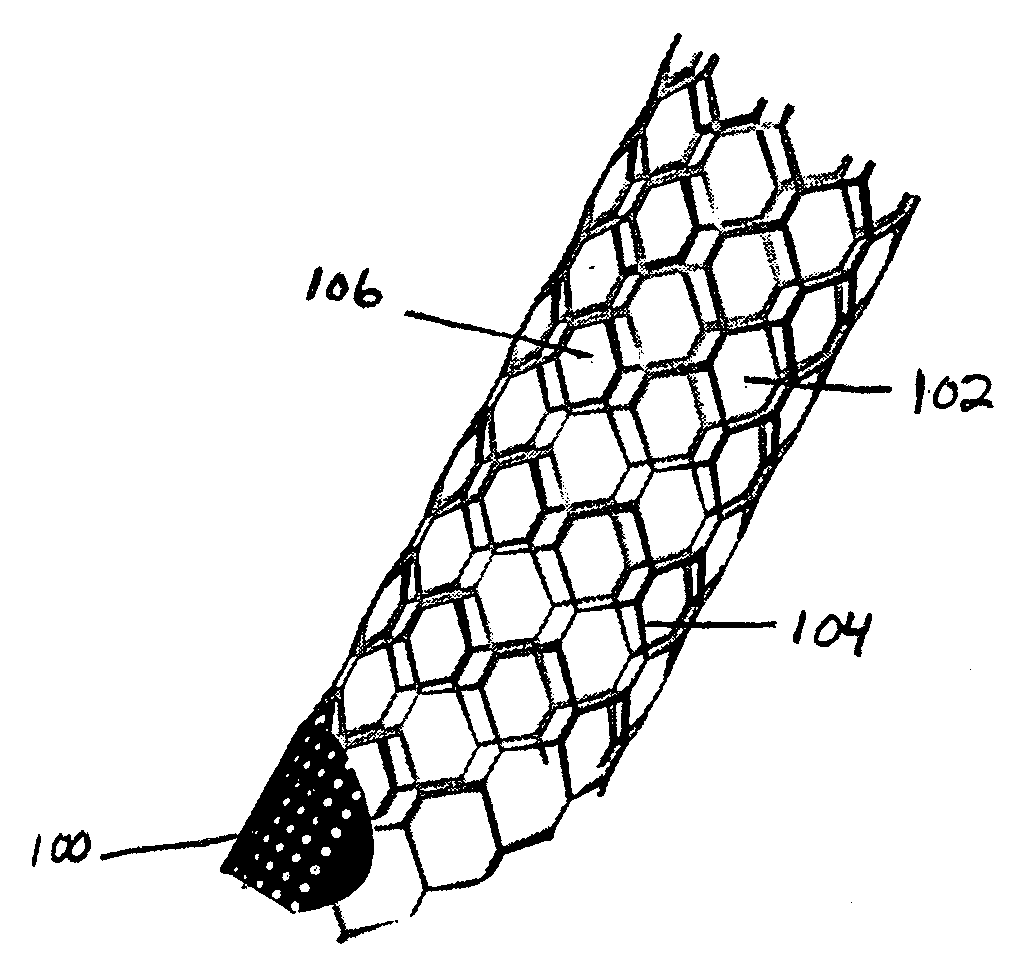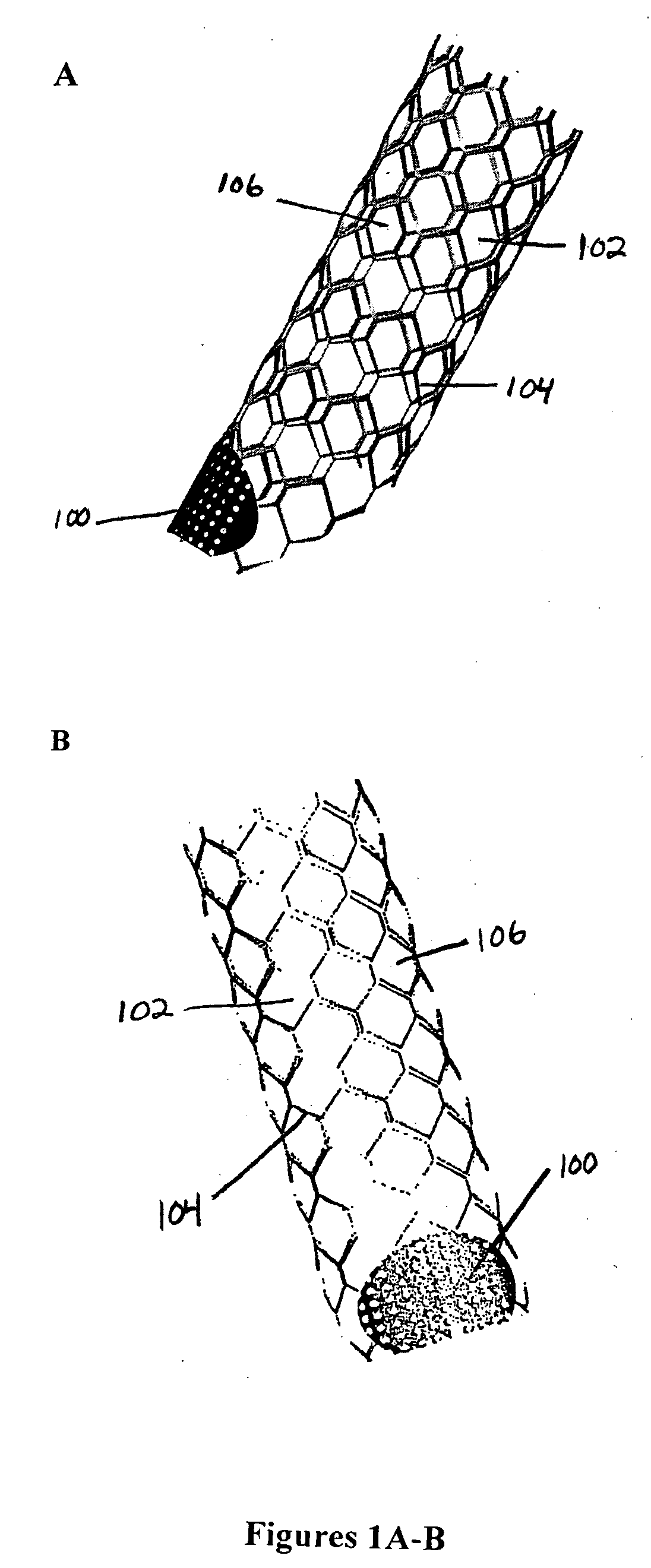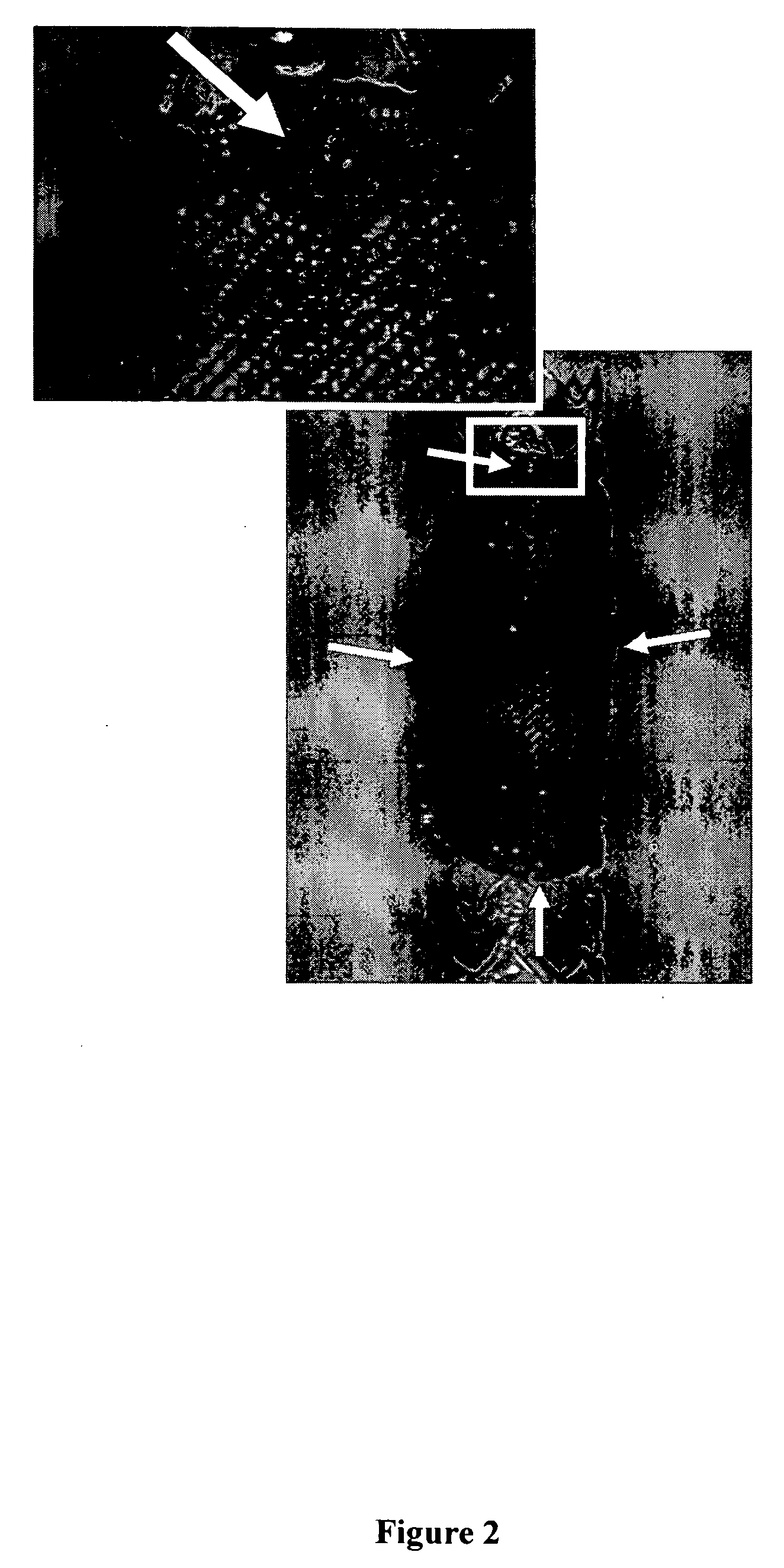Stent vascular intervention device and methods for treating aneurysms
a technology of vascular intervention and aneurysm, which is applied in the field of stents, can solve the problems of not being able to deploy a single stent in front, not being able to keep a coil mass in place, and not being able to deploy a single stent, etc., and achieves the effects of reducing the duration, reducing the risk of stent failure, and simple and accurate deploymen
- Summary
- Abstract
- Description
- Claims
- Application Information
AI Technical Summary
Benefits of technology
Problems solved by technology
Method used
Image
Examples
example 1
Evaluation of an Asymmetric Stent Patch Design
[0056] Aneurysm hemodynamics is known to be significantly affected by the arterial and the aneurysmal wall boundaries which vary from patient to patient (Rhee et al., “Changes of Flow Characteristics by Stenting in Aneurysm Models: Influence of Aneurysm Geometry and Stent Porosity,”Ann. Biomed. Eng., 30:894-904 (2002), which is hereby incorporated by reference in its entirety). Therefore, it is important to consider the specific geometrical characteristics of an artery and an aneurysm to make hemodynamically favorable modifications using placement of a stent.
[0057] An asymmetric stent patch was designed for an anterior cerebral artery aneurysm of a specific patient, where the patch porosity varied across the neck. The local porosity of the patch at the proximal neck was designed to block the strong inflow jet in the patient-specific aneurysm. The purpose of the study was to evaluate the hemodynamic effects of the patient-specific asymm...
example 2
Patient-Specific Aneurysm and Stent
[0059] A 52-year old female patient's ACA aneurysm was selected (FIG. 9). The anatomical geometry was reconstructed from CTA images for flow analysis. Bone structures were removed from vascular anatomy. The bone-removed aneurysm geometry was segmented and smoothed for rendering. Ujiie et al. found that saccular aneurysms were more likely to rupture when the aspect ratios (AR) of the aneurysms were greater than 1.6 (Ujiie et al., “Hemodynamic Study of the Anterior Communicating Artery,”Stroke, 27:2086-2094 (1996); Ujiie et al., “Effects of Size and Shape (Aspect Ratio) on the Hemodynamics of Saccular Aneurysms: A Possible Index for Surgical Treatment of Intracranial Aneurysms,”Neurosurgery, 45(1):119-130 (1999), which are hereby incorporated by reference in their entirety). From the geometric analysis of the reconstructed aneurysm, the aspect ratio of this superior oriented ACA aneurysm was about 2.3; hence, it would be in danger of rupture. Thus, ...
example 3
CFD Simulation
[0061] The untreated and stented aneurysm geometries were meshed with 0.6 and 1.2 million tetrahedral volume elements, respectively. The blood flow was calculated by a finite volume based CFD code, StarCD® (CD-adapco, Melville, N.Y.) under the assumption of incompressible flow. The calculation was performed with both steady and pulsatile flow conditions (FIG. 10). In addition to solving the governing equations of the flow, the scalar transport equations, which is similar to the Navier-Stokes equations but describe the motion in a scalar, were added for the virtual angiographic visualization. Therefore, sequential operations to solve the scalar transport equations were performed during each iteration. The second order accuracy was obtained by choosing a central differencing scheme for solving both flow and scalar equations. In this study, the average Reynolds number (Re) of the flow was 678, which is higher than normal but still in the range of typical flows known to o...
PUM
 Login to View More
Login to View More Abstract
Description
Claims
Application Information
 Login to View More
Login to View More - R&D
- Intellectual Property
- Life Sciences
- Materials
- Tech Scout
- Unparalleled Data Quality
- Higher Quality Content
- 60% Fewer Hallucinations
Browse by: Latest US Patents, China's latest patents, Technical Efficacy Thesaurus, Application Domain, Technology Topic, Popular Technical Reports.
© 2025 PatSnap. All rights reserved.Legal|Privacy policy|Modern Slavery Act Transparency Statement|Sitemap|About US| Contact US: help@patsnap.com



